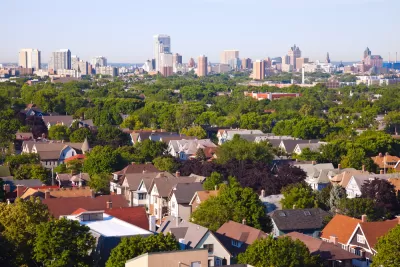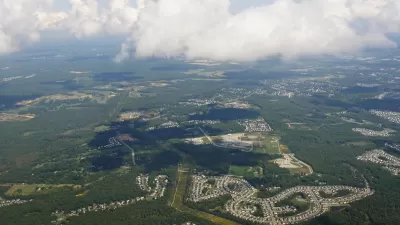Updating zoning regulations would help the state meet its housing goals and encourage the construction of a broader variety of housing types.

According to a new report from Forward Analytics, Wisconsin needs between 140,000 and 227,000 new housing units by 2030, but restrictive zoning regulations are exacerbating the shortage and preventing new multifamily housing construction, reports Joe Schulz for Wisconsin Public Radio.
“The report said the number of baby boomers retiring and remaining in their homes long after retirement is expected to exacerbate Wisconsin’s housing shortage, making it difficult for younger workers to find affordable housing,” Schulz writes.
A toolkit developed by the League of Wisconsin Municipalities suggests “small tweaks to zoning codes that will offer more flexibility for multifamily housing units and mixed-use housing developments.” The toolkit recommends loosening regulations in single-family neighborhoods, permitting more accessory dwelling units, and getting rid of parking minimums, among other changes.
As we regularly cover on Planetizen, zoning reform has taken center stage in the debate over how to alleviate the national housing crisis. But as Schulz notes, zoning changes alone won’t solve the problem. “The Forward Analytics report said the two biggest obstacles for building more housing over the next decade are a lack of available lots and high interest rates slowing home construction.”
FULL STORY: Outdated zoning makes addressing Wisconsin's housing shortage more difficult

Rethinking Redlining
For decades we have blamed 100-year-old maps for the patterns of spatial racial inequity that persist in American cities today. An esteemed researcher says: we’ve got it all wrong.

Montreal Mall to Become 6,000 Housing Units
Place Versailles will be transformed into a mixed-use complex over the next 25 years.

Planetizen Federal Action Tracker
A weekly monitor of how Trump’s orders and actions are impacting planners and planning in America.

Santa Clara County Dedicates Over $28M to Affordable Housing
The county is funding over 600 new affordable housing units via revenue from a 2016 bond measure.

Why a Failed ‘Smart City’ Is Still Relevant
A Google-backed proposal to turn an underused section of Toronto waterfront into a tech hub holds relevant lessons about privacy and data.

When Sears Pioneered Modular Housing
Kit homes sold in catalogs like Sears and Montgomery Ward made homeownership affordable for midcentury Americans.
Urban Design for Planners 1: Software Tools
This six-course series explores essential urban design concepts using open source software and equips planners with the tools they need to participate fully in the urban design process.
Planning for Universal Design
Learn the tools for implementing Universal Design in planning regulations.
City of Camden Redevelopment Agency
City of Astoria
Transportation Research & Education Center (TREC) at Portland State University
Regional Transportation Commission of Southern Nevada
Toledo-Lucas County Plan Commissions





























